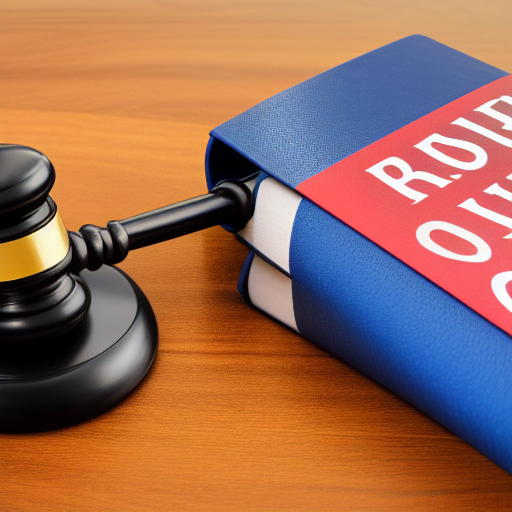Personal Injury Lawsuits
If you’ve been injured in an accident, you may consider a personal injury lawsuit to help cover your medical expenses and other damages. But what do you need to know about these lawsuits before making a decision? Here’s a brief overview of the process, from filing a claim to receiving a settlement. Keep in mind that this is just a general overview – for specific advice, speak to an attorney.

What is a Personal Injury Lawsuit?
A personal injury lawsuit is a civil suit brought by an injured person, or their representative, against the person or entity they allege is responsible for their injuries.
The purpose of a personal injury lawsuit is to seek financial compensation for the physical and emotional harm caused by the defendant’s negligence or intentional misconduct.
In some cases, punitive damages may also be awarded to punish the defendant and deter others from engaging in similar misconduct.
Common Kinds of Personal Injury Cases
Many different kinds of accidents and injuries can give rise to a personal injury lawsuit. Some of the most common kinds of cases include:
- Car Accidents: Car accidents are the leading cause of personal injury lawsuits in the United States. If you’ve been injured in a car accident, you may be able to sue the other driver if they were at fault.
- Slip and Falls: If you’ve been injured in a slip and fall on someone else’s property, you may be able to sue the property owner if they were negligent in maintaining the property.
- Medical Malpractice: If a doctor or other medical professional has harmed you, you may be able to file a medical malpractice lawsuit.
Injuries Covered By Personal Injury Lawsuit
Personal injury lawsuits can cover many injuries, including physical and emotional harm. Some of the most common kinds of injuries that are covered include:
- Broken bones
- Loss of limb
- Paralysis
- Burns
- Disfigurement
- Scarring
- Injuries to internal organs
- Emotional distress
- Loss of consortium
Calculating Damages in a Personal Injury Lawsuit
In a personal injury lawsuit, damages are the monetary compensation awarded to the plaintiff for the harms they have suffered. Two types of damages may be available in a personal injury case:
Compensatory damages are designed to reimburse the plaintiff for their losses. This can include medical expenses, lost wages, property damage, and pain and suffering.
Punitive damages may also be available in some cases. These are designed to punish the defendant and deter others from engaging in similar misconduct.
Solution of a Personal Injury Lawsuit
The solution to a personal injury lawsuit can take many forms. In some cases, the parties may agree to settle the case out of court. This can often be done through mediation or arbitration.
In other cases, the case may go to trial, and a jury will decide whether the defendant is liable and what damages should be awarded.
Statute of Limitations
It’s important to note that there is a time limit, or statute of limitations, for filing a personal injury lawsuit. This varies from state to state but is typically two years from the date of the accident.
If you wait too long to file your lawsuit, you may be barred from doing so altogether.
This is just a general overview of the personal injury lawsuit process. For specific legal advice, you should speak to an attorney.
Laws Governing Personal Injury Lawsuits
Personal injury lawsuits are governed by state law. The specific rules and procedures for filing and litigating a personal injury case can vary from state to state.
It’s important to be familiar with your state’s laws and any deadlines that may apply to your case.

Steps in a Personal Injury Lawsuit
Mainly 6 different steps are included in a personal injury lawsuit-
Attorneys are hired by injured plaintiffs
In the 1st step, the attorneys are hired by the injured plaintiffs. After that, both sides will investigate the facts of the case and gather evidence. The plaintiff’s attorney will also send a demand letter to the defendant, asking for compensation for the injuries suffered.
The defendant responds to the demand letter
In the 2nd step, the defendant will have the opportunity to respond after receiving the demand letter from the plaintiff. The defendant may agree to pay the demanded amount, or they may make a counteroffer. If no agreement is reached, the case will proceed to litigation.
The case goes to court
If no settlement is reached, the case will go to court, and a judge or jury will decide whether the defendant is liable and what damages should be awarded.
“Discovery” and Pre-Trial Motions
During the litigation process, both sides will have the opportunity to conduct “discovery.” This is the process of gathering evidence and information relevant to the case. Both sides will also have the opportunity to file pre-trial motions, such as motions to dismiss or for summary judgment.
Personal Injury Trials
If the case does not settle and goes to trial, a judge or jury will hear arguments from both sides and decide whether the defendant is liable and what damages should be awarded.
After the verdict is entered, either side may appeal the decision.
There is a strong likelihood of settlement
It’s important to keep in mind that the vast majority of personal injury cases settle out of court. Some estimates suggest that as many as 95% of all personal injury cases are resolved through settlement.
Frequently Asked Questions (FAQs)
What Are The Most Common Personal Injury Cases?
The most common personal injury cases include car accidents, slip, and fall accidents, and medical malpractice.
What Is The Largest Personal Injury Settlement Ever?
The largest personal injury settlement on record was $4.9 billion. This settlement was reached in the case of a young woman who suffered severe brain damage after she was deprived of oxygen at birth.
What Is A Major Personal Injury?
A major personal injury is any injury that results in serious harm, such as a traumatic brain injury or paralysis.
What Do You Do In A Personal Injury Case?
If you’ve been injured due to someone else’s negligence, you may be able to file a personal injury lawsuit. You should speak to an attorney to get specific legal advice.
Final Verdict
So, what do you think? Have we given you enough information to make an informed decision about whether or not to file a personal injury lawsuit? Remember, the most important thing is to consult with an attorney who can guide you through the process and help you protect your rights. At the very least, we hope this article has helped shed some light on the basics of personal injury law.





